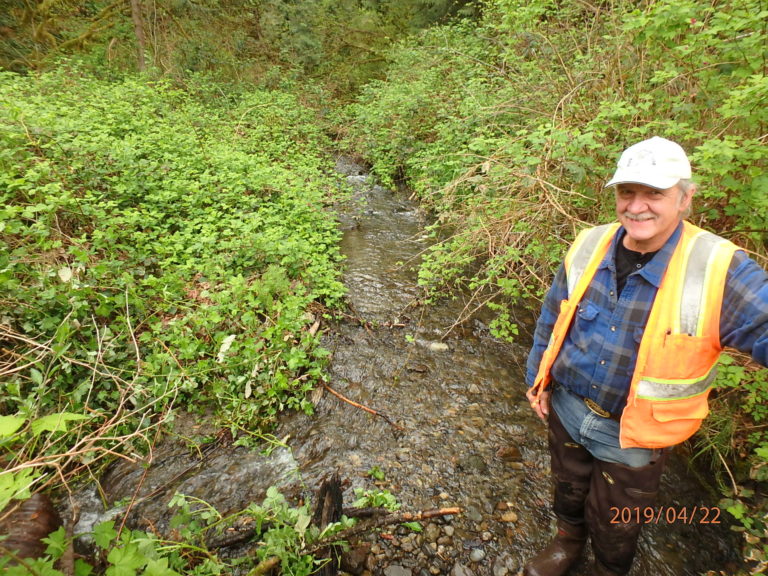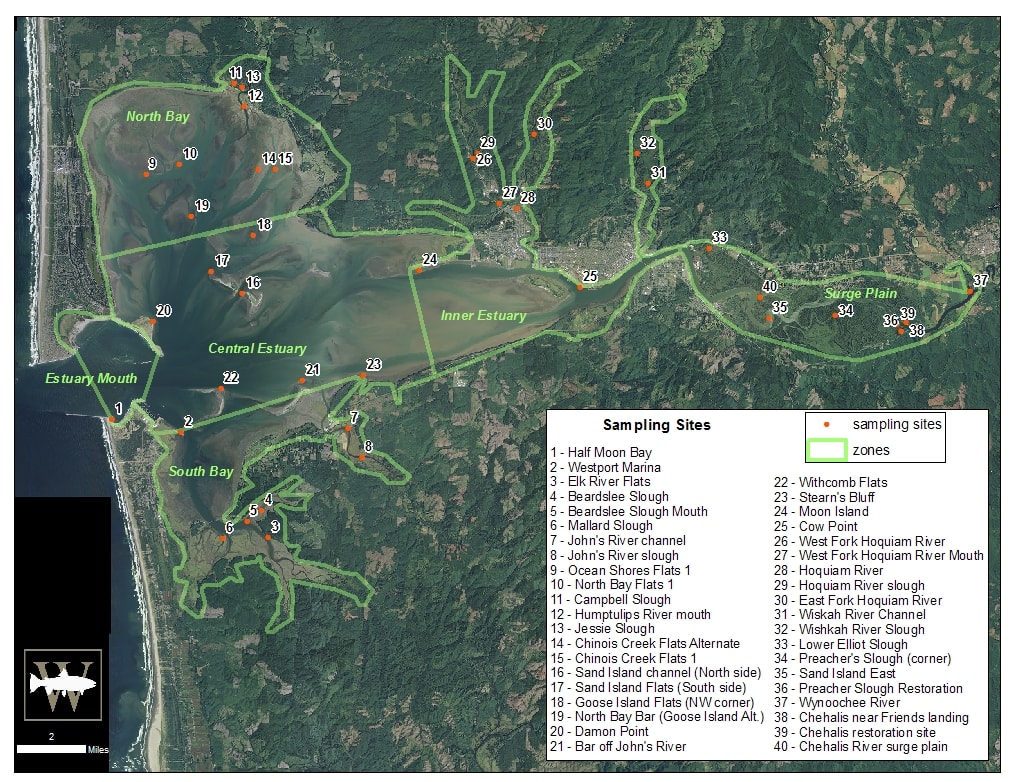

Grays Harbor, part of the Chehalis River estuary in western Washington State, is the second largest estuary in the state of Washington. It encompasses the tidally-influenced lower reaches of the Chehalis, Humptulips, Hoquiam, Wishkah, Johns and Elk Rivers as well as several smaller tributaries and sloughs and is home to numerous declining stocks of native salmonids that are important to the overall biological diversity in Washington State.
This project examined current nearshore habitat usage patterns of juvenile salmonids to evaluate potential habitat restoration projects. Wild Fish Conservancy (WFC) staff sampled over 20 sites throughout Grays Harbor twice per month from March through September. Sample sites were spread throughout the estuary in order to better capture the usage of the entire estuary, but targeted locations where habitat restoration and protection projects could potentially be sited. WFC worked with the Chehalis Basin technical committee to best determine where potential habitat restoration and protection projects are located in the estuary.
In addition to fish usage data, WFC staff took Coded Wire Tag readings, and collected relevant physical habitat parameters and water quality data in order to determine how these variables might be driving habitat usage within the estuary. The project final report includes suggested habitat restoration and protection actions based on the data collected over the course of the project.
Location | Start Date |
|---|---|
Grays Harbor, Chehalis River estuary, Grays Harbor County, western Washington State | 12/10/2010 |
Project Type | Completion Date |
|---|---|
Nearshore Fish Use | 06/08/2013 |
The objectives of this project were to develop a scientific basis for the evaluation of potential sites for future habitat restoration and protection projects (as well as identifying construction windows for those projects), to determine the seasonal trends in estuary residence, and to identify any potential fish health issues resulting from external macro-parasitic infections.
The specific goals were to document the species composition, distribution, relative abundance, habitat use, and timing of juvenile salmonids and other fishes in the Grays Harbor estuary, from riverine tidal waters through marine habitats.
Primary Habitats Impacted By Project: | Managing Agency/ Organization: |
|---|---|
Estuary | Wild Fish Conservancy |
Project Contact: | Budget or Project Cost: |
|---|---|
Micah Wait | $460,635.00 |
Funding Sources: | Partners: |
|---|---|
Washington State Recreation and Conservation Office Grants | Chehalis Basin technical committee |

Join our mailing list to recieve important updates on our work, the latest wild fish news, & opportunities to take action to support wild fish.
This site is protected by reCAPTCHA and the Google Privacy Policy and Terms of Service apply.
Wild Fish Conservancy is recognized as a 501(c)3 non-profit by the IRS